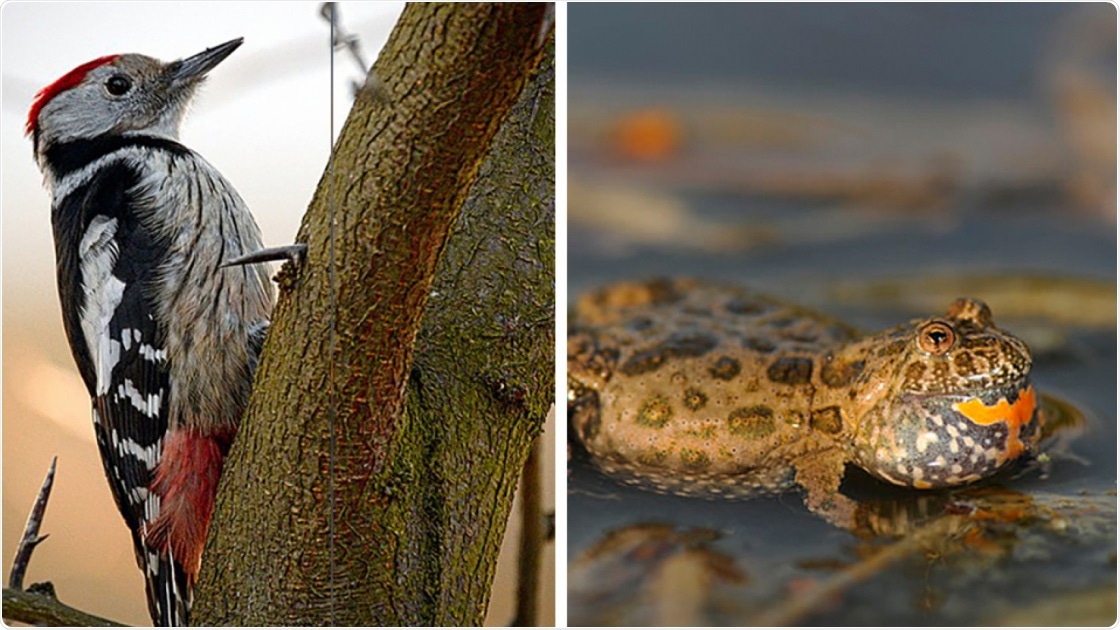Reviewed by Dan Hutchins, M.PhilJun 8 2021
Researchers in Lund, Copenhagen, and Norwich have demonstrated that detrimental mutations in DNA play a vital—but often overlooked—role in vulnerable species translocation and conservation initiatives.

The middle-spotted woodpecker has disappeared from Sweden, while the European fire-bellied toad has been reintroduced. Image Credit: Wikimedia Commons.
Many species are threatened by extinction, both locally and globally. For example, we have lost about ten vertebrate species in Sweden in the last century. However, all these species occur elsewhere in Europe, which means that they could be reintroduced into Sweden. Our computer simulations show how we could theoretically maximize the success of such reestablishments.”
Bengt Hansson, Biologist, Lund University
The researchers studied whether individuals would be most suited for translocation to other populations in a recent study published in the Science journal. Until now, conservation geneticists have chosen the most genetically diverse individuals.
The authors believe, however, that it is critical to evaluate what sort of genetic variation is being moved about. They used computer simulations and demonstrated that detrimental mutations in the genomes of translocated humans might create difficulties in future generations.
This so-called “mutation load” might endanger the viability of the new population in the long term, leading to extinction.
The ideal option, according to Hansson and van Oosterhout, a geneticist from the University of East Anglia in Norwich who conducted the study, is to remove people with numerous detrimental mutations while also choosing individuals from numerous diverse source populations.
Active translocation of animals between localities is sometimes the last option available to conservation biologists. By carefully selecting individuals based on their low mutation load, we can minimize the loss of fitness that is normally associated with inbreeding in small populations.”
Bengt Hansson, Biologist, Lund University
Massive progress has been achieved in DNA sequencing technology, and individuals’ whole genomes may now be sequenced at comparatively low costs. This brings up new avenues for improving threatened species conservation management.
For many species of mammals and birds, we now know which mutations are harmful. Similar mutations are also found in humans, so we understand what they do, and hence, we know what to look out for when analyzing the sequence data of those species. The advantage of using DNA sequencing is that we can see these mutations in the genome, even if an individual carries just a single copy of the mutant gene.”
Van Oosterhout, Geneticist, University of East Anglia, Norwich
“This means we can select against those bad mutations even before they cause a problem. Our computer model shows that at least theoretically, this ensures the best probability for population survival. This could help conservation managers in picking the optimal individuals of a threatened species for translocation into a new habitat,” concluded Oosterhout.
Source:
Journal reference:
Hansson, B., et al. (2021) Comment on “Individual heterozygosity predicts translocation success in threatened desert tortoises”. Science. doi.org/10.1126/science.abh1105.